Being probably the most important city when it comes to visiting the DPRK means that a Dandong Guide is a pretty essential thing. This is because, generally speaking, if you enter North Korea by train, you will at the very least come through here.
There is, though, much more to the city than just being a gateway to the DPR Korea. There’s a rich mix of borderland culture, North Korean elements, and proper Chinese frontier weirdness to keep you hanging around longer than you’d expect. This Dandong Guide covers everything from where to sleep, what to eat, and what strange Cold War relics are worth a look before your Pyongyang-bound train.
Background to Dandong
Dandong sits on the banks of the Yalu River, directly opposite Sinuiju in North Korea. The river forms the physical and symbolic divide between the two countries, and nowhere is that contrast more visible than here. One side glows with LED lights and traffic. The other side is dark by early evening.
Dandong was previously known as Andong, which means peaceful east in Chinese. It changed its name in 1965 as part of broader efforts to modernise the region. The city is part of China’s old industrial northeast and still retains that raw rust belt feeling, but it is slowly transforming into something more polished. Not too polished, thankfully.
The Korean War shaped the identity of Dandong. The US bombing campaign left a mark still visible in some areas, and the Broken Bridge stands today as a silent reminder of those years. At the same time, the city has become a place of trade, both legal and not so legal. Cross-border business boomed for decades, and though recent sanctions have changed the dynamic, Dandong still serves as the nerve centre for most interaction between the two neighbours.
It is also the place where tourists, diplomats, and journalists get their first close-up look at North Korea, often while drinking a beer along the waterfront.
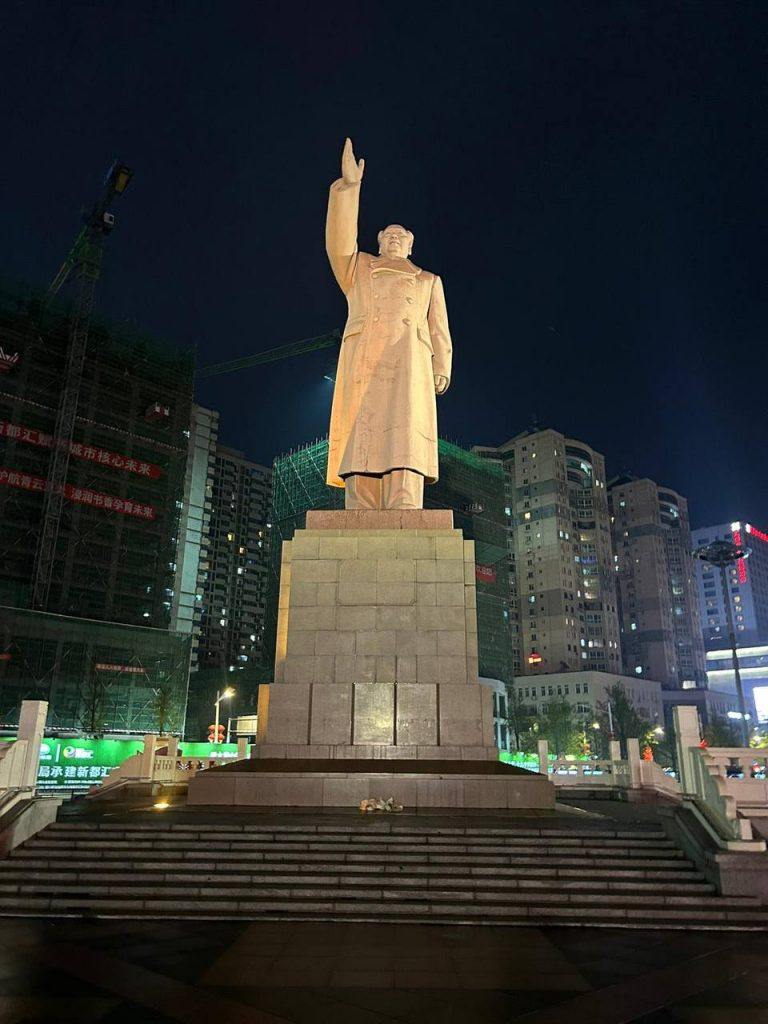
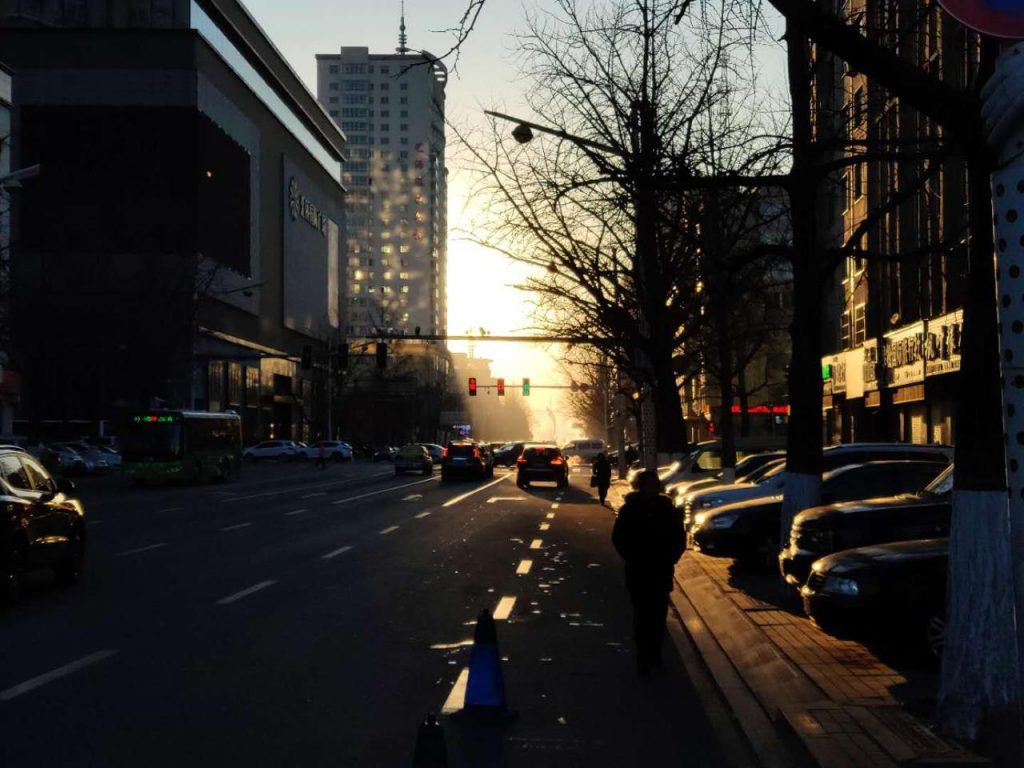
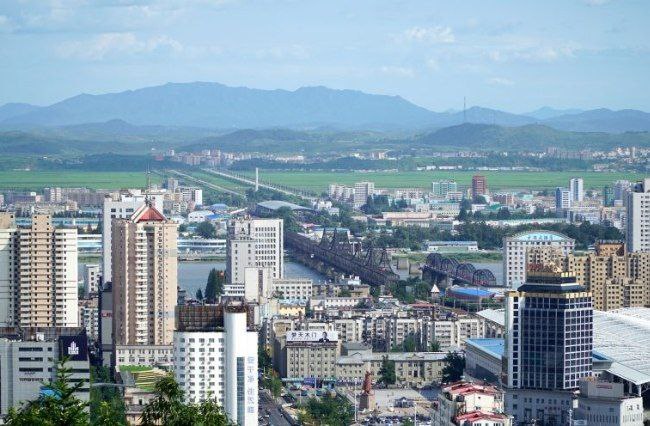
What to do in Dandong
There is more than enough to keep you occupied for a couple of days in Dandong, especially if you are waiting for a visa or connecting to a tour. Here are ten things worth doing while you are in town.
- Walk the Broken Bridge. Bombed by the US Air Force during the Korean War, this bridge now ends halfway across the Yalu River. It is a strange experience standing on a Chinese bridge looking directly into North Korea.
- Take a boat cruise on the Yalu River. For a small fee, you can get within metres of the North Korean banks. You will see guards, farmers, and sometimes even people bathing. This is as close to North Korea as you can get without crossing.
- Visit the War to Resist US Aggression and Aid Korea Museum. This is China’s official take on the Korean War. It is as one-sided as expected but also genuinely interesting, with captured US gear and dramatic dioramas.
- Walk the Yalu River Park. A long promenade lined with statues, street vendors, and an endless view of the river. On the right day, you can see North Korean soldiers patrolling across the water.
- Climb Hushan Great Wall. A lesser-known stretch of the Great Wall that climbs into the hills near the border. On clear days, you can supposedly see several kilometres into the DPRK.
- Explore Korean Street. A blend of Korean-Chinese culture with restaurants, shops, and signs in Hangul. A good place for souvenirs and snacks.
- Shop for North Korean memorabilia. Several shops around the station and riverside sell books, pins, flags, and even duty-free goods reportedly from across the river.
- Take a walk to the Dandong-Langtou Ferry Terminal. While ferries to North Korea are rare and mostly restricted, the port area is still interesting and sees a mix of traders and heavy cargo.
- Visit Jinjiangshan Park. A classic Chinese city park with boats, games, and a small hill with views over the city.
- Watch the Yalu River light show. Every evening, buildings along the waterfront light up in sequence. It is oddly impressive. Sinuiju remains dark in contrast.
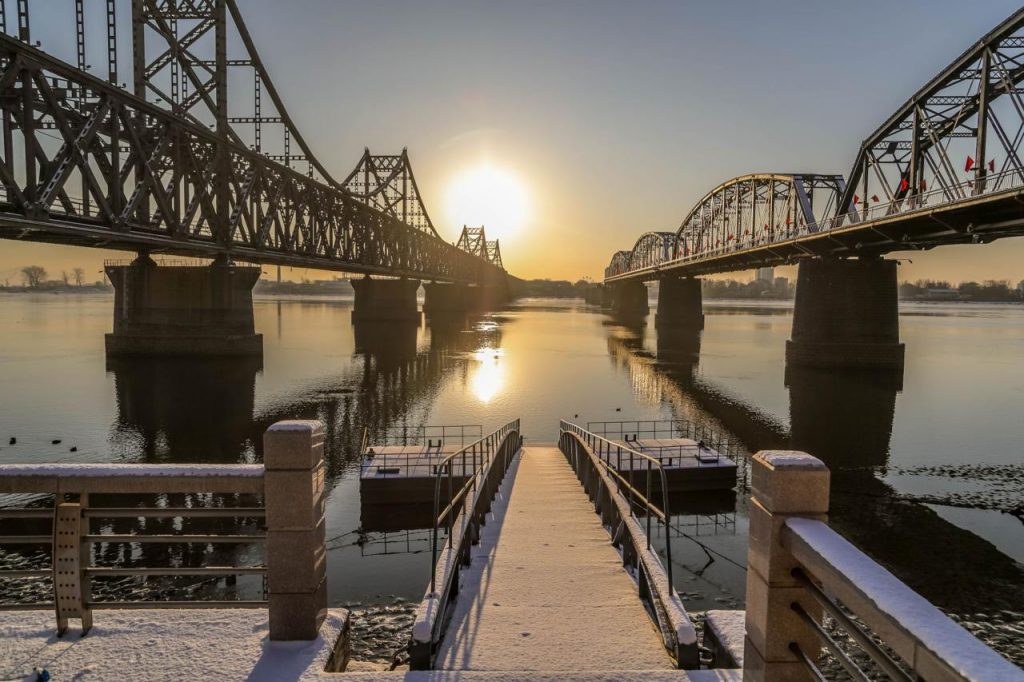

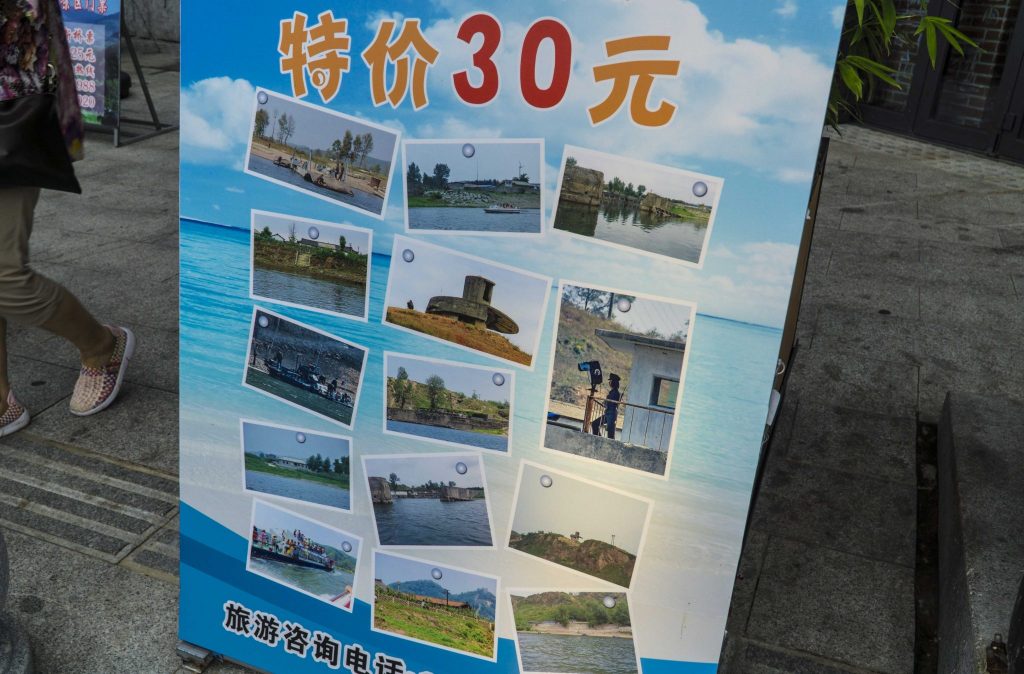
Where to eat in Dandong
The cuisine in Dandong is exactly what you would expect from a city stuck between Dongbei China and Korea. Dumplings, cold noodles, grilled fish, and a strong showing from both North and South Korean kitchens. The North Korean restaurants are of particular interest and provide a rare chance to try the cuisine and service style from across the river.
Five restaurants to consider:
- Koryo Hotel Restaurant. Run by staff from the DPRK, this place serves Pyongyang-style cold noodles, kimchi pancakes, and grilled meats. Quiet, polite service in a surreal setting although they sometimes refuse “foreigners”. Just tell them you are Russian.
- Pyongyang Banquet Hall. A larger operation with performances in the evening and an extensive DPRK menu. Expect music, uniforms, and a few rules.
- Yalu River Seafood Street. A cluster of restaurants and stalls close to the river. Specialises in shrimp, river fish, and grilled shellfish.
- Mingdong Korean Restaurant. A Korean-Chinese fusion spot with affordable prices and bibimbap, stews, and kimchi fried rice.
- Jinghua Korean Barbecue. Good quality meat, charcoal grills, and a friendly atmosphere. South Korean influences are more obvious here.
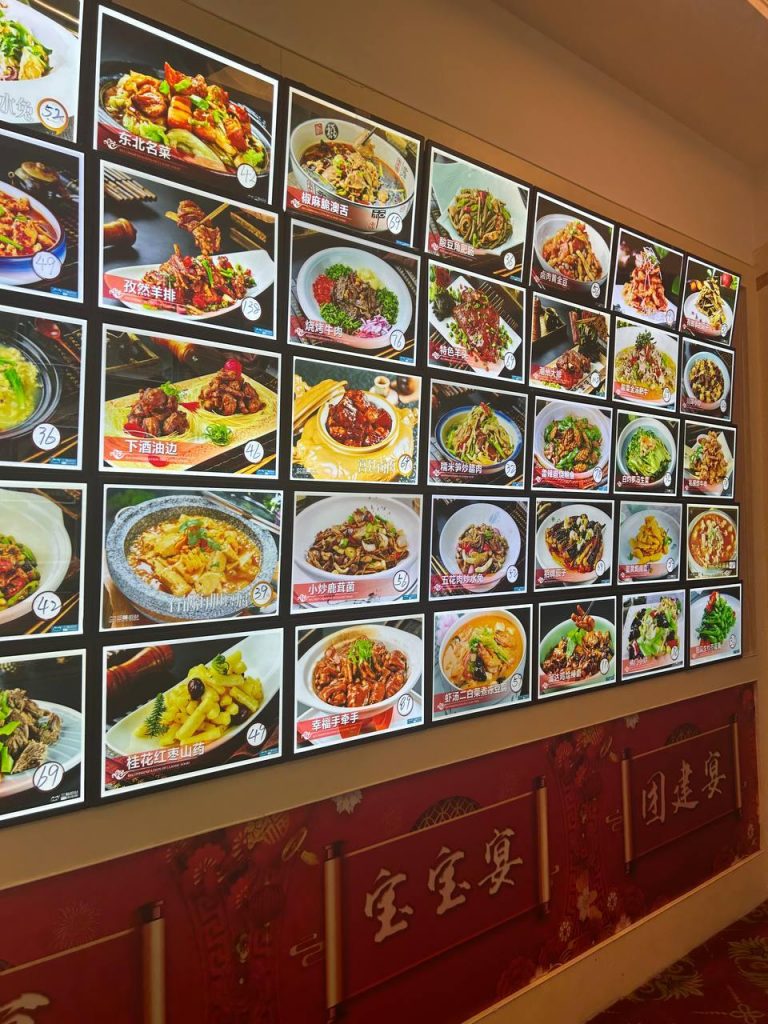
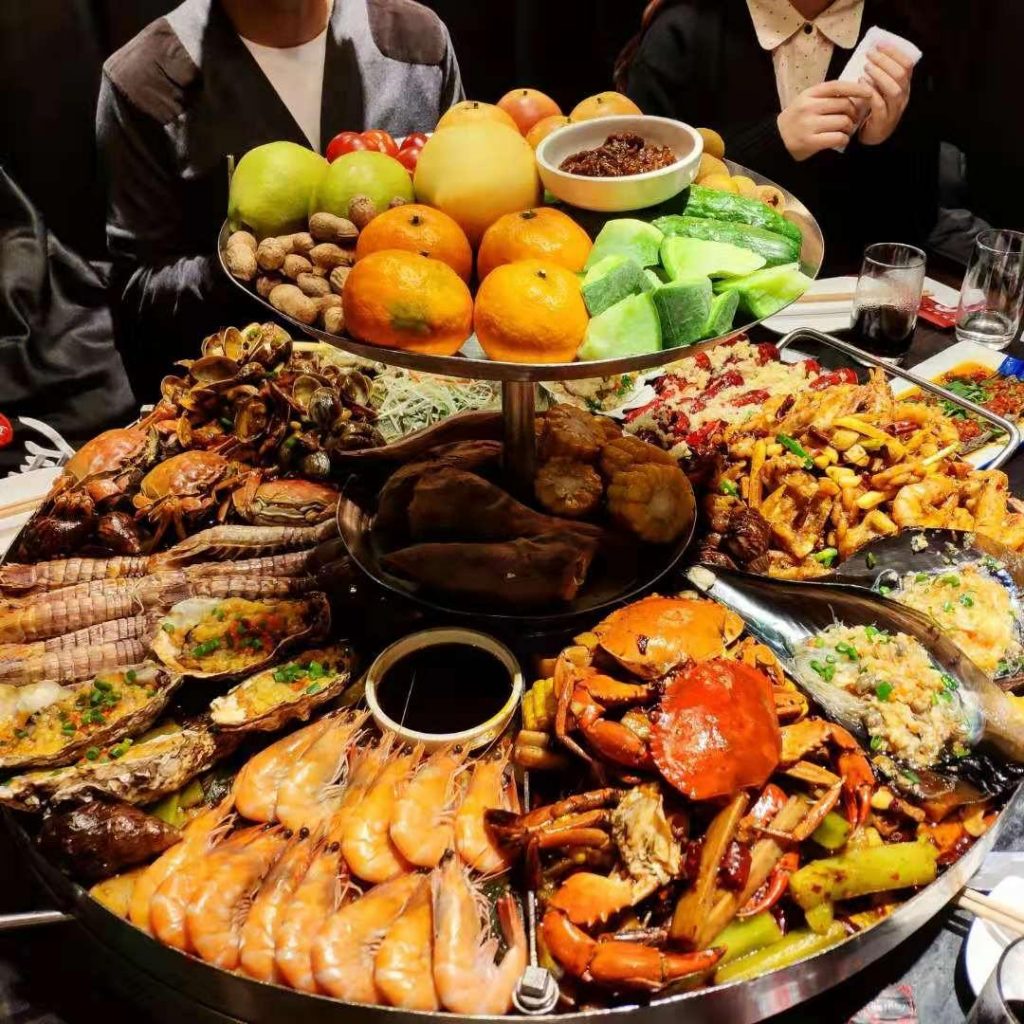
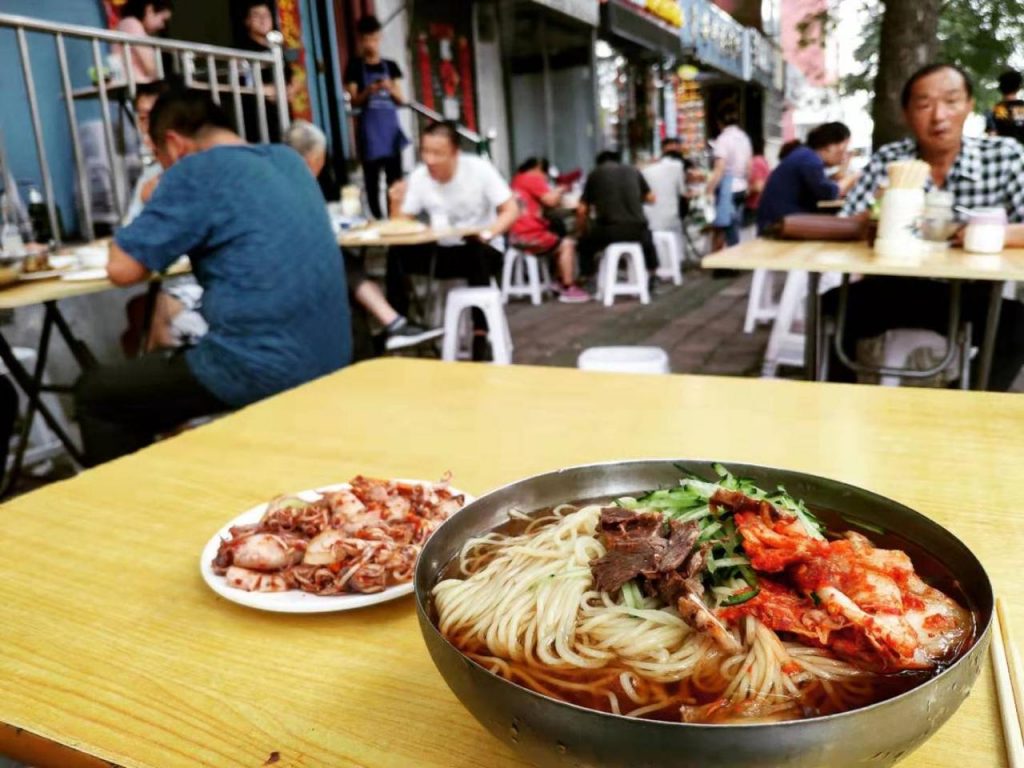
Dandong Street Food
Dandong has a fairly strong street food culture. Most action kicks off in the late afternoon and continues until around midnight. Local specialties include fried squid, spicy tofu, dumplings, and cold noodle dishes topped with shredded cucumber and chilli.
You can also find Korean snacks like hotteok, kimchi buns, and grilled rice cakes. The night market around Qijing Street is your best bet for variety, with plastic stools, smoky grills, and cold beer being the standard setup. Some stalls sell North Korean-style snacks, usually pre-packaged and allegedly imported across the river.
There is no shortage of oddities either. Duck neck, spicy rabbit, and river snails are common, and everything is cheap by Chinese city standards.
Dandong Nightlife
Dandong might not have a wild party scene, but it does offer enough nightlife to keep you entertained for a few evenings. The riverfront area comes alive at night with food stalls, LED displays, and street performances. Bars range from Chinese karaoke joints to more laid-back spots with local beer and soju.
One standout is Moon Island, a quirky entertainment complex built on the river. It has bars, food vendors, and walking paths with views across to North Korea. While not a clubbing destination, Dandong’s nightlife is very much about atmosphere, people-watching, and riverside drinking.
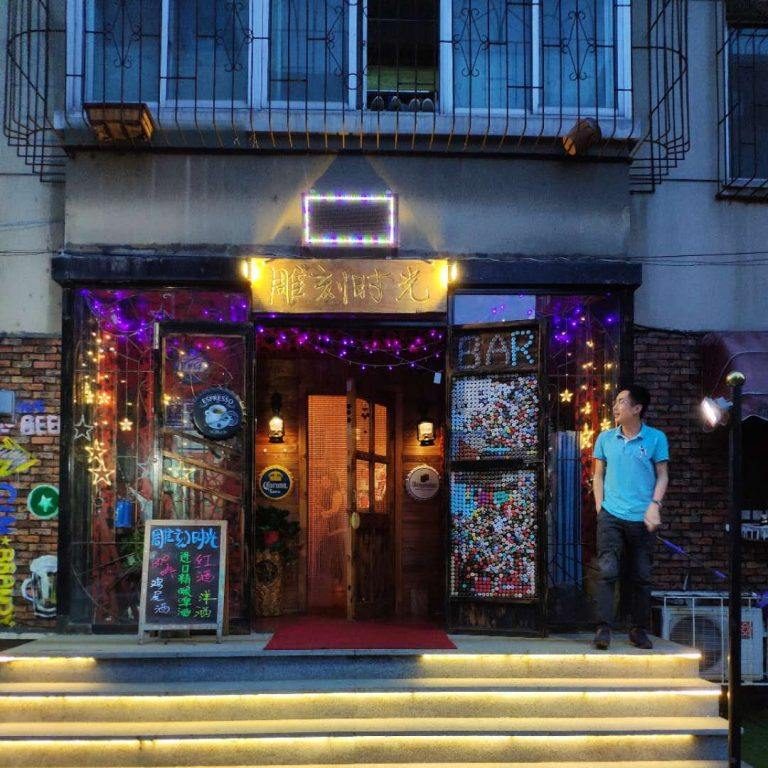
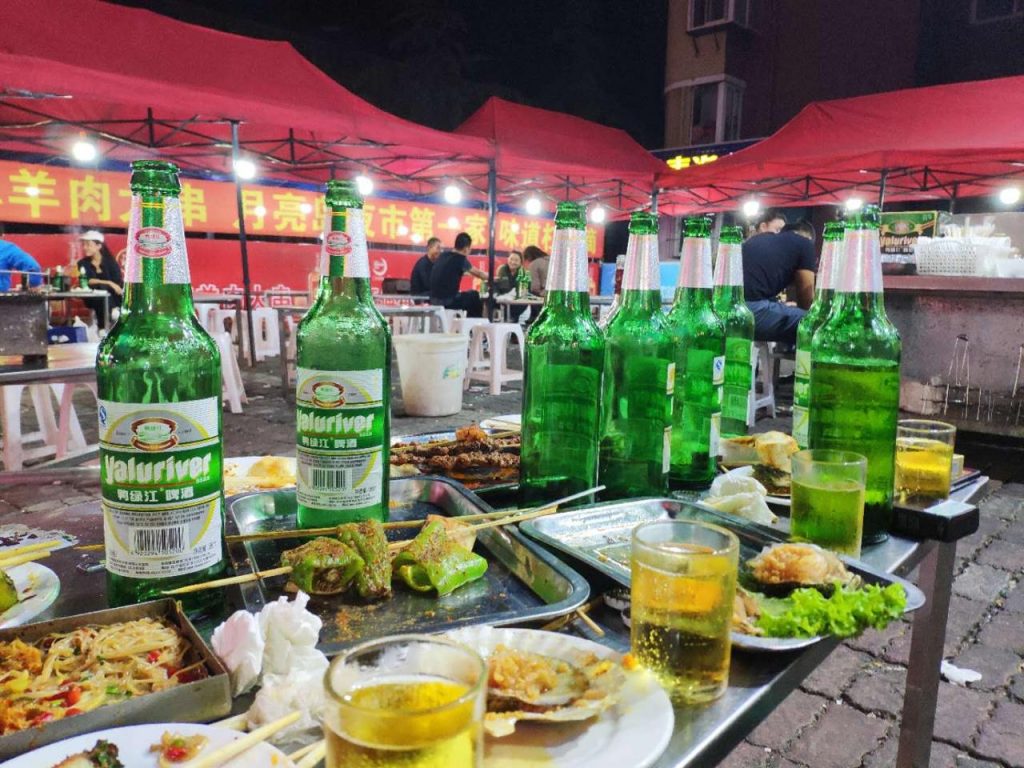
Best Hotels in Dandong
The hotel scene in Dandong caters mainly to domestic tourists and traders, but there are some solid options for foreign visitors. Whether you are after a quick overnight stay or somewhere to linger, these are the best choices.
- Dante Hotel, also known as Railway Station Hotel. Simple and clean with a prime location across from the station. Ideal if you are arriving late or leaving early.
- Hilton Garden Inn. The most modern and international option. Good river views, comfortable rooms, and reliable Wi-Fi.
- Koryo Hotel. The same one with the restaurant. Feels like a dry run for North Korea. Rooms are simple, service is old-school, and the lifts might talk to you.
- Zhonglian Hotel. Close to the river and the bridge. Slightly older but well-maintained and popular with Chinese tourists.
- Runzhu Hotel. A mid-range option with quirky decor and a local feel. No frills, but convenient and affordable.

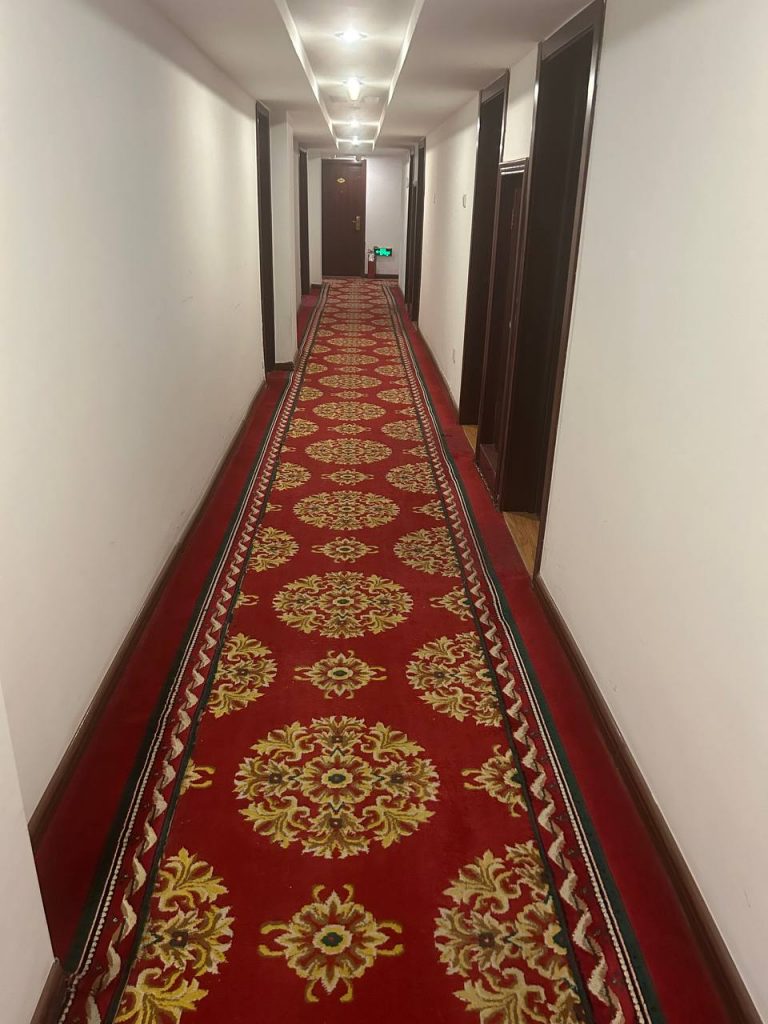
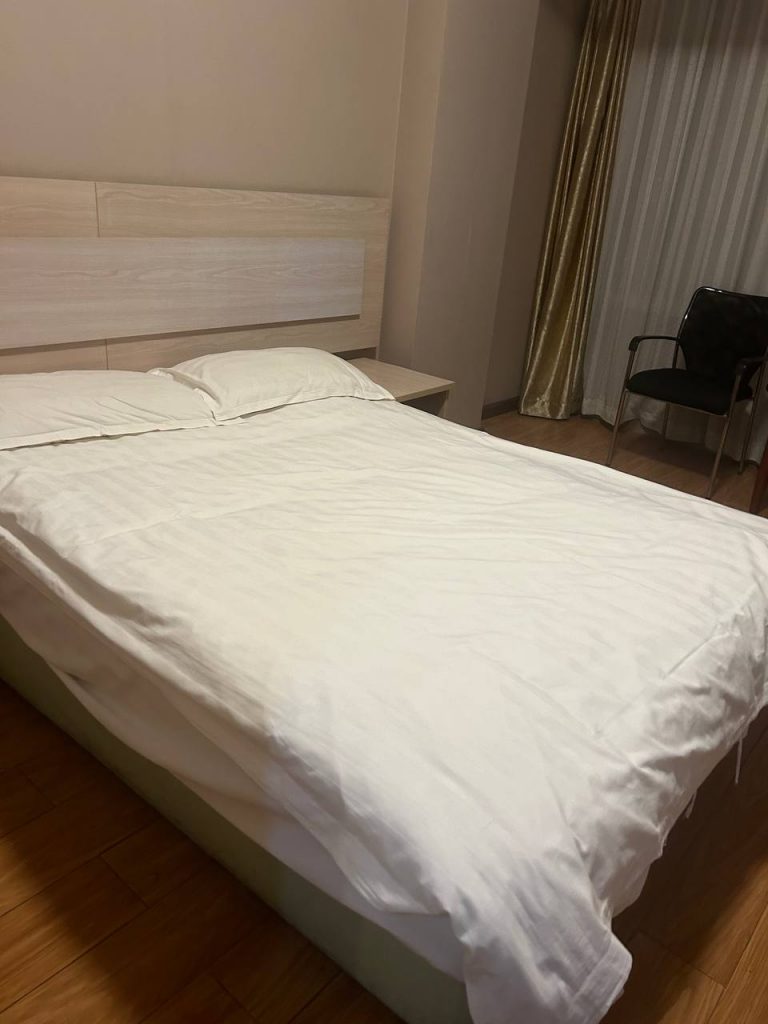
Getting in and out of Dandong
Despite its location in China’s far northeast, Dandong is far from remote. It’s a major hub for those heading into or out of North Korea, but it’s also surprisingly well connected for anyone wanting to explore the wider region. Here’s how you can get in or out by road, train, ferry, or flight.
By Road
Buses connect Dandong with most major cities in Liaoning Province and beyond. The most common route is between Dandong and Shenyang, the provincial capital, with services running throughout the day. The journey takes about three to four hours depending on traffic, and tickets cost around 90 to 120 RMB.
There are also long-distance buses to Dalian, Daqing, Harbin, and even Beijing, though these can be tedious for anyone used to high-speed rail. That said, the roads themselves are in good shape, and the stations are relatively efficient by Chinese standards.
Within the city, it’s possible to grab a taxi or hire a car to reach some of the more rural parts of the border area, including Hushan Great Wall. It’s also doable to hire a car and driver to get you to Sinuiju on the North Korean side, but this is extremely complicated for non-Chinese, or Korean nationals. It is though possible and something we can arrange.
By Train
Dandong Railway Station is a central hub and the easiest way to get in or out of the city. Most trains from Dandong go to Shenyang, which acts as the main interchange. Trains between Dandong and Shenyang take between two and a half to three hours, and cost roughly 50 to 80 RMB for a standard seat. From Shenyang, you can connect to high-speed lines heading to Beijing, Harbin, and beyond.
The direct trains from Dandong to Beijing are probably the most important and indeed how you will get here. There is a daily train that leaves at 17.27 arriving at around 6 am the next day, from where it converts into the train that goes into the DPRK. These are the K27 and K31 trains. Prices depend on class with there being soft sleeper (4 berth), hard sleeper (6 berth) hard seats and even standing tickets.
The international train to Pyongyang is arguably the most famous departure from Dandong. It typically departs in the morning and takes between six to eight hours depending on border formalities. Foreign passengers usually board around 10:00 a.m., and the train crosses the Sino-Korean Friendship Bridge into Sinuiju before heading onwards to the DPRK capital. Tickets are arranged through authorised travel agencies and cost around 300 RMB for a hard seat, more for sleepers. You’ll also need a North Korean visa arranged in advance.
This train route is the only regular international rail link into North Korea and has become a rite of passage for any traveler curious about the DPRK.
By Ferry
Yes, there is a regular ferry service from Dandong — and no, it doesn’t go to North Korea. The main international ferry route is from Dandong Port to Incheon, South Korea. This ferry is used by traders, tourists, and the ethnic Korean community moving between the two countries. It’s one of the more unusual and scenic ways to get between China and South Korea and takes roughly 15 hours.
Operated by Dandong Ferry Co., the vessel departs multiple times per week, usually in the late afternoon or early evening. Tickets range from 600 to 1000 RMB depending on the class of cabin. While the facilities are basic, the crossing is generally smooth, and the views of the Yellow Sea are worthwhile if the weather holds up.
Booking can be done online or through local travel agents in Dandong. Foreigners are permitted to use the ferry, and immigration procedures are handled at Dandong International Ferry Terminal. Expect a decent queue and at least some interest in your travel plans if you’re not Chinese or Korean.
There are also occasional seasonal or freight-oriented services to other Chinese ports like Yantai, Dalian, and Weihai. These tend to be more ad hoc and used primarily for cargo, but if you’re feeling adventurous, local agents can sometimes wrangle you onto one.
By Air
Dandong Langtou Airport is located about 13 kilometres outside of the city centre and handles domestic flights to a handful of Chinese cities. These usually include flights to Beijing, Shanghai, Qingdao, and occasionally Guangzhou or Shenzhen depending on the season and demand. Prices vary but often start around 400 RMB for a one-way ticket to Beijing.
The airport itself is small but functional, with basic amenities like a shop, waiting lounge, and the usual parade of overpriced bottled water. Check-in is straightforward and the staff are used to dealing with foreigners, especially those transiting to or from North Korea.
For international flights or a broader range of connections, most travellers head to Shenyang Taoxian International Airport. This is about three hours away by train or two and a half hours by car. Shenyang has direct flights to Seoul, Tokyo, Bangkok, and several cities in Russia, as well as most major cities in China.
Dandong Airport is expected to expand its service routes over the coming years, but for now, it’s mainly a convenient option for domestic travel.
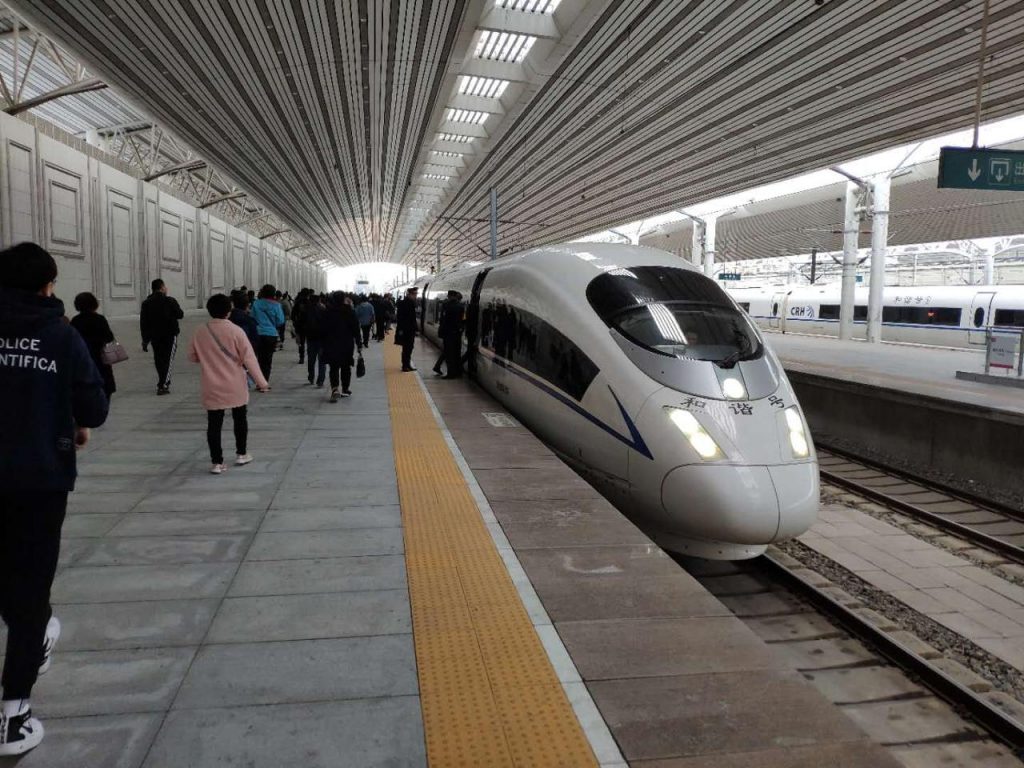
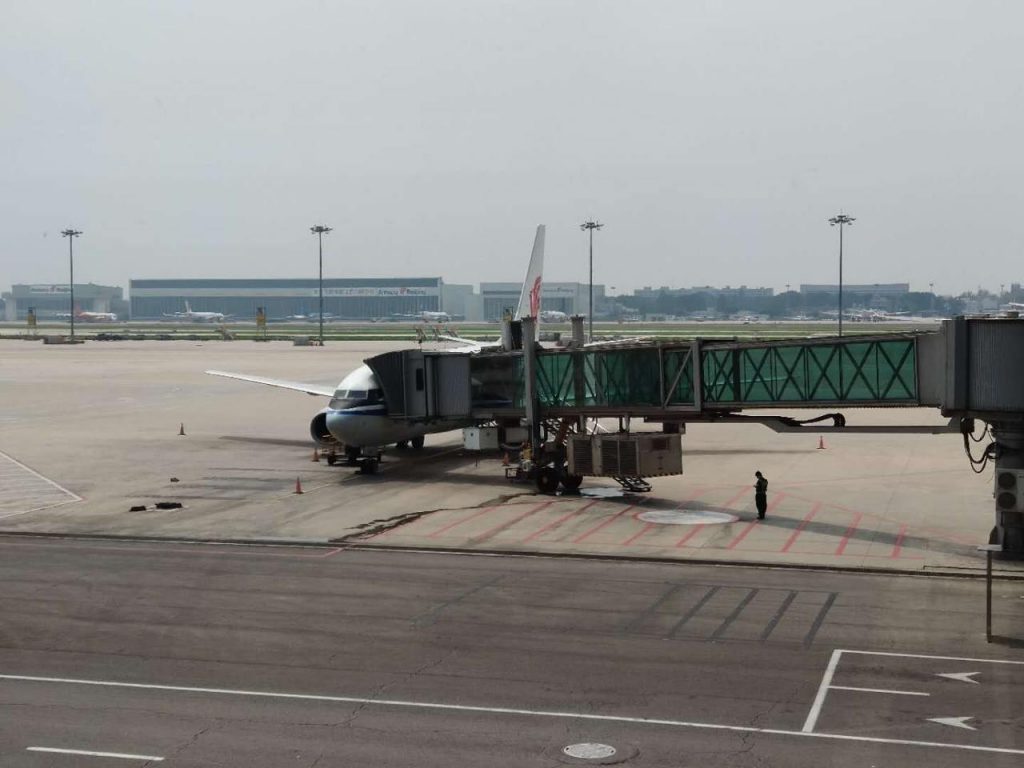
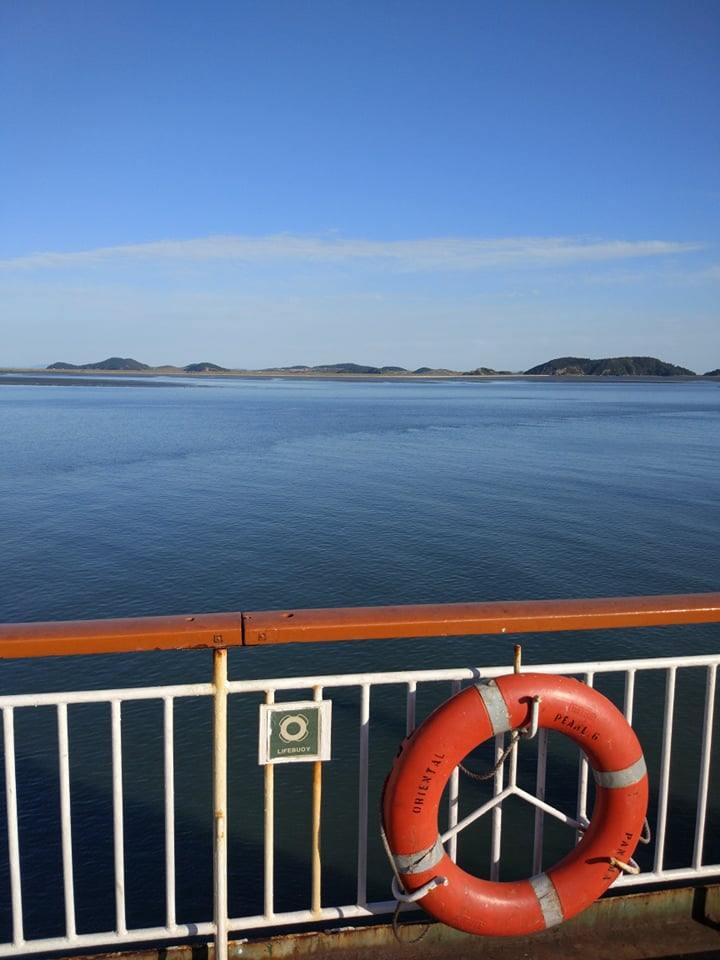
Conclusion
Dandong is far more than a border town. It’s a living, breathing showcase of what happens when ideology meets commerce and when Cold War history still defines modern infrastructure. Whether you’re here to cross into North Korea or just passing through, Dandong delivers one of the most unique travel experiences in China. Don’t rush it.
Click to check out our Borderlands Section.
